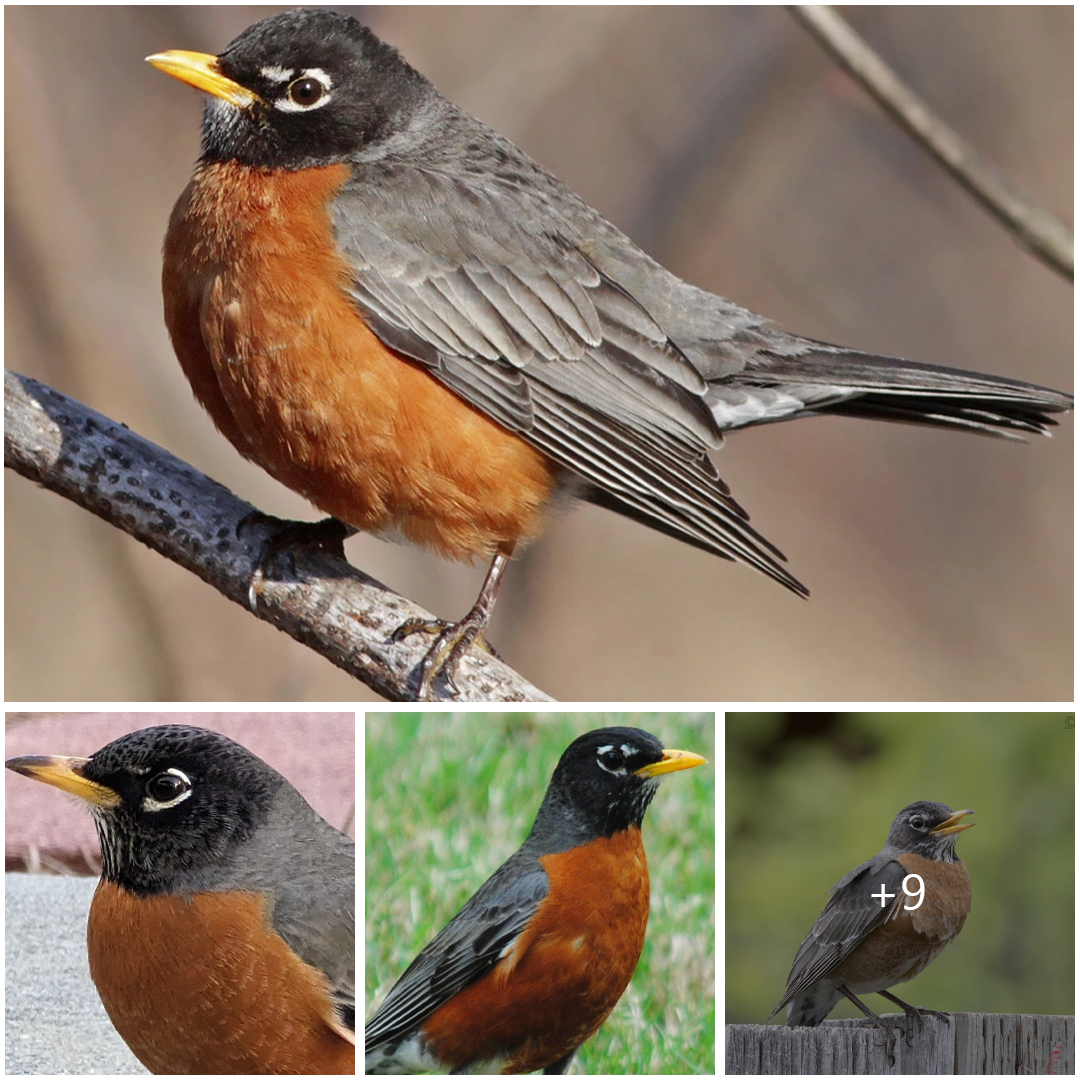
The American Robin: An Iconic Avian Symbol of North America
The American Robin, scientifically known as Turdus migratorius, stands as a quintessential symbol of North American birdlife. With its vibrant red breast, melodious song, and widespread distribution, this beloved species captures the hearts of birdwatchers and nature enthusiasts alike.
Native to North America, the American Robin is a familiar sight across the continent, from lush woodlands and suburban neighborhoods to city parks and open fields. Its distinctive appearance, marked by a rusty orange breast contrasting with a dark gray back, makes it easily recognizable, even for casual observers.
One of the most endearing qualities of the American Robin is its cheerful song, which signals the arrival of spring in many regions. Their melodious calls, often described as a series of clear, flute-like notes, fill the air as they forage for food or defend their territories. This vocal prowess not only serves as a means of communication but also adds a delightful soundtrack to the natural world.
While often associated with spring and summer, American Robins are also adaptable birds, capable of enduring harsh winter conditions. In colder months, they switch their diet from earthworms and insects to berries and fruits, allowing them to survive when other food sources are scarce. Flocks of robins gathering to feast on winter berries create a picturesque scene against the backdrop of snow-covered landscapes.
Beyond their aesthetic appeal, American Robins play crucial ecological roles as seed dispersers and insect controllers. By consuming a variety of fruits and insects, they help regulate populations of pests while aiding in the propagation of plant species through seed dispersal. Their presence in urban and suburban areas also serves as a reminder of the importance of preserving green spaces for wildlife habitat.
Despite their widespread abundance, American Robins face challenges posed by habitat loss, climate change, and collisions with human structures. Conservation efforts aimed at preserving and restoring their habitats, promoting responsible urban planning, and raising awareness about the importance of bird-friendly practices are essential for ensuring the long-term survival of this iconic species.
In conclusion, the American Robin stands as a cherished emblem of North America’s avian diversity, captivating observers with its beauty, song, and adaptability. As stewards of the natural world, it is our collective responsibility to safeguard the habitats and ecosystems that support the continued presence of this beloved bird for generations to come.





